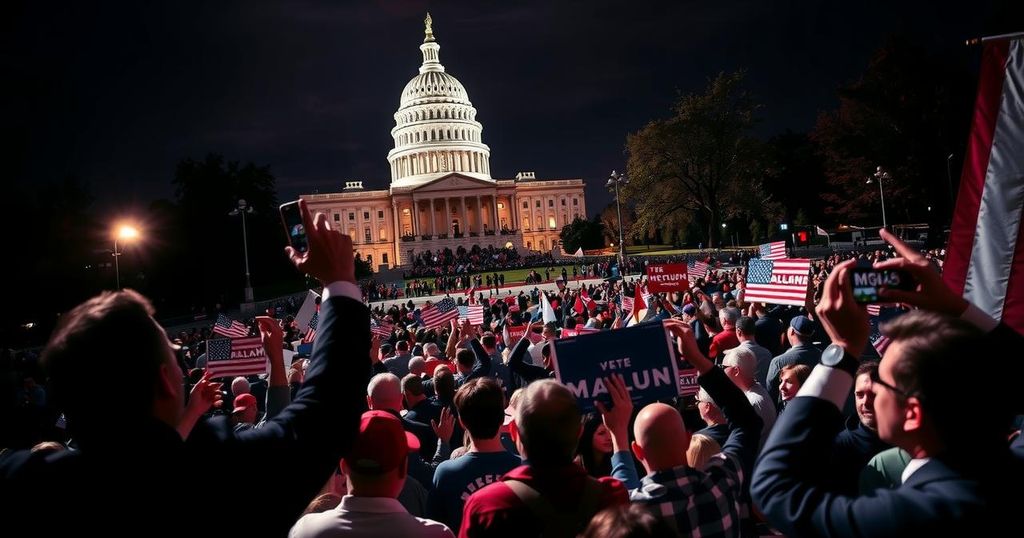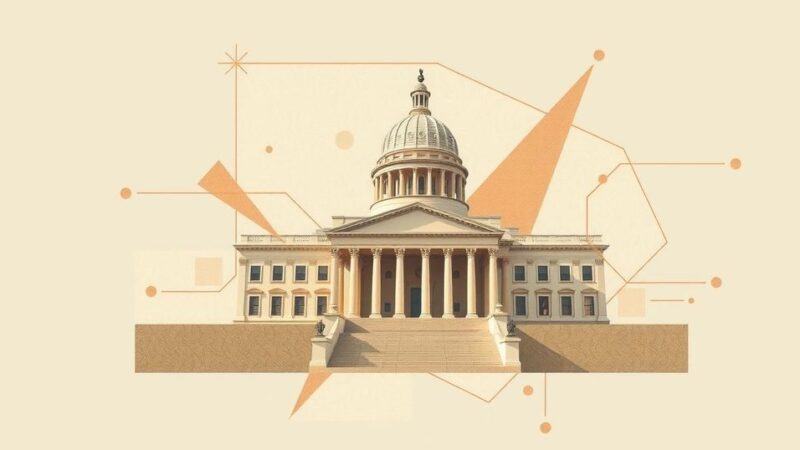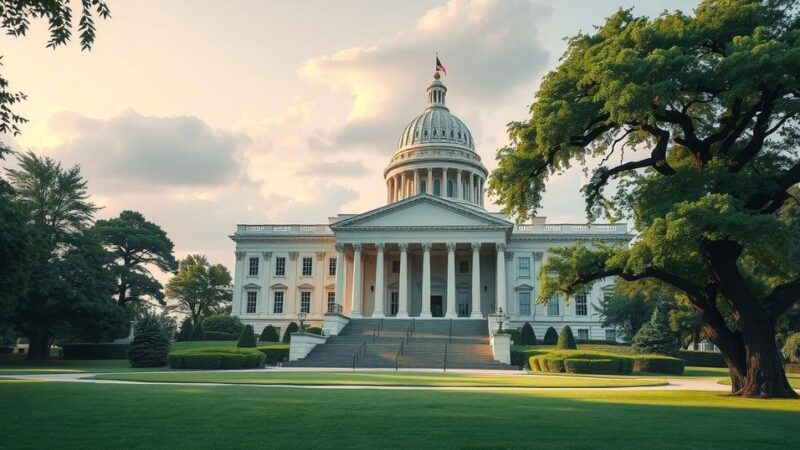As the 2024 election approaches, Donald Trump campaigns in Pennsylvania following a press event in Florida, while Kamala Harris makes her case for voter support in Washington, D.C. Trump’s campaign is marred by controversy over remarks made about Puerto Rico, and discussions arise about the potential impact of his presidency on public health initiatives. The political discourse is evolving, with declining engagement on social media and provocative political art emerging. Both candidates are framing their messages around unity versus division as they approach the critical final days of the campaign.
As the 2024 U.S. presidential election approaches, significant developments are occurring within the campaigns of Vice President Kamala Harris and former President Donald Trump. On Tuesday, Mr. Trump will conduct a news conference in Palm Beach, Florida, before proceeding to Pennsylvania, a pivotal battleground state, to continue his campaign efforts. Simultaneously, Vice President Harris is scheduled to deliver a pivotal speech from the Ellipse in Washington, D.C.—a location steeped in historical significance as it was where Mr. Trump addressed his supporters prior to the events of January 6, 2021. Mrs. Harris is anticipated to emphasize a narrative of change and progress, urging voters to metaphorically “turn the page.” In a separate analysis of political engagement, it has been observed that key political figures are experiencing dwindling followership on the social media platform X, under Elon Musk’s ownership, highlighting a troubling trend in political discourse. The forthcoming election is also witnessing a surge of provocative political art, including a controversial tiki torch statue linked to extremist sentiments, further illustrating the charged atmosphere of the current campaign. Amid these developments, Mr. Trump’s campaign faces repercussions stemming from offensive remarks made by a speaker at a recent rally regarding Puerto Rico. His subsequent media address aims to navigate the fallout. Health officials express concern regarding potential implications for the Centers for Disease Control and Prevention (CDC) should Mr. Trump secure another term, as proposals to reshape the agency could diminish vital public health programs. In Michigan, where both major parties are fiercely contesting support, Vice President Harris articulates a contrasting vision to Mr. Trump, underscoring unity versus division in her campaign messaging. Mr. Trump, in response to accusations of fascism, has publicly stated, “I am the opposite of a Nazi,” seeking to redefine narratives surrounding his candidacy just days before Election Day. Meanwhile, considerable numbers of Americans continue to participate in early voting, with lengths of ballots in states like Arizona raising concerns about Election Day logistics. As the election nears, the political landscape continues to evolve, marked by intensified campaigning, artistic expressions of dissent, and ongoing dialogue surrounding key issues that could define the future of American governance.
The current political climate in the United States is characterized by heightened tensions as the 2024 presidential election approaches. The ongoing campaigns are underscored by significant events that shape public perception of the candidates. The contrasting strategies of Vice President Harris and former President Trump reflect broader ideological divides. This election is marked by extreme voter engagement, and the role of social media platforms like X has become increasingly crucial in influencing public discourse. Additionally, artistic expressions of political discontent reveal societal attitudes toward the candidates and the political system. As candidates travel across key states, their speeches and appearances are designed to resonate with voters’ concerns, while controversies surrounding each candidate’s past remarks add layers of complexity to their campaigns.
In summary, the race for the presidency is intensifying as both major candidates engage with key issues and voter sentiments. Vice President Harris seeks to position herself as a unifying force contrasting Mr. Trump’s divisive rhetoric. The implications of social media engagement, as well as real-time public reactions to political art and statements, underscore the intricate dynamics at play in this election cycle. As both candidates prepare for a critical final stretch, their strategies will likely pivot around addressing voter concerns and securing decisive support ahead of November’s elections.
Original Source: www.washingtonpost.com







